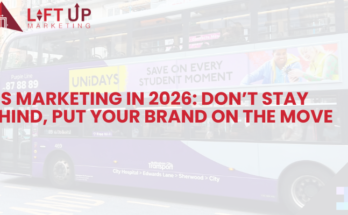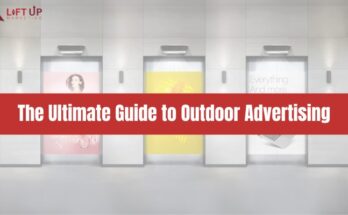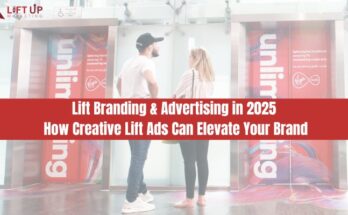As we move deeper into 2025, the advertising landscape continues to evolve at breakneck speed. Decision‑makers across industries must stay ahead of emerging patterns, platforms, and technologies to remain competitive. This comprehensive analysis highlights the most critical advertising trends of 2025 and explains what leaders need to understand to drive growth, optimize budgets, and engage audiences effectively. Our approach emphasizes strategic foresight, actionable insights, and thoughtful planning—all aligned under the guiding methodology of Liftupmarketing.
1. The AI Revolution and Data-Driven Personalization
One of the defining forces of advertising in 2025 is the maturation of AI-driven personalization. Generative AI, machine learning, and predictive modeling now underlie nearly every aspect of campaign design—from creative generation to audience targeting.
- Dynamic creative optimization allows marketers to adjust ad content in real time based on user behavior, demographics, and contextual signals. It is especially effective in e-commerce and SaaS verticals, where personalized messaging can lift engagement by 30–50 %.
- Predictive analytics are increasingly central to planning and budget allocation. AI models forecast campaign success, allow scenario testing without costly A/B experiments, and optimize bidding strategies across channels
Under the approach of Liftupmarketing, decision‑makers must integrate AI tools within workflow processes, ensuring creative and media inputs are informed by real-time performance data.
2. Connected TV (CTV) and Video Dominance
Video advertising is no longer optional—it’s essential. Short‑form, long‑form, and streaming channels are commanding consumer attention in unprecedented ways:
- Connected TV (CTV) ad spending is booming, with CTV expected to represent a significant portion of total digital ad revenue by 2029. PwC projects CTV ad revenue alone to reach $51 billion globally.
- Short-form social video across platforms like TikTok, Instagram Reels, and YouTube Shorts remains a powerful engagement tool, especially for younger audiences .
Effective Liftupmarketing strategies treat video formats not as silos but as part of a unified narrative journey—where longer content builds brand depth and shorter clips drive engagement and virality.
3. Rapid Growth of Mobile Advertising
Mobile devices continue to dominate digital ad consumption. According to recent forecasts, nearly two-thirds of digital ad spend in 2025 is expected to be delivered on mobile platforms .
- Mobile video will surpass mobile search ad spending in 2026, highlighting the shift toward visual-first interactions.
- AI-powered programmatic bidding in mobile environments ensures ads reach users at peak moments of intent or engagement.
In a Liftupmarketing framework, mobile-first creative design, real-time attribution, and optimized bidding strategies are foundational to capturing high-intent audiences on smartphones and tablets.
4. Q‑Commerce and Hyper‑Targeted In‑App Advertising
In markets like India, quick commerce (q‑commerce) is reshaping retail and advertising. Platforms such as Blinkit, Swiggy Instamart, and Zepto offer unprecedented in‑app ad opportunities:
- They leverage first-party, real-time intent data to deliver regionally and behaviorally targeted campaigns with higher CTRs and conversion rates .
- Brands are building in‑house ad platforms to own the full funnel—mapping customer journeys from in-app discovery to purchase .
For decision‑makers adopting Liftupmarketing, investing in q‑commerce placements and integrating them into omnichannel strategies is essential to reaching consumers at the point of need.
5. Hyper‑Localization and Cultural Relevance
Consumers increasingly expect ads that reflect their local languages, customs, and values:
- Localized campaigns tailored to regional nuances outperform one-size-fits-all messaging by up to 40 % in engagement and conversion metrics .
- Advertisers are customizing content not just by region but by cultural moment and local context—for example, using vernacular video content, local holidays, and community-specific triggers.
Decision‑makers practicing Liftupmarketing should prioritize regional insights, collaborate with local creative teams, and iterate messaging that respects and resonates with diverse cultural audiences.
6. Measuring ROI: Attribution, Reporting, and Transparency
With rising ad budgets and growing scrutiny, demonstrating clear ROI is non-negotiable:
- Enhanced reporting and attribution tools are rated by 80 % of marketers as even more important in 2025 than before .
- Transparency demands extend beyond creatives to include explainable AI and standardized benchmarks, so marketers can justify decisions rather than rely solely on opaque platform metrics.
In the context of Liftupmarketing, organizations should embrace transparent dashboards, cross-channel unified metrics, and decision‑making frameworks that clearly map inputs to outcomes.
7. Privacy-Aware Advertising and Ethical Data Practices
As data protection laws multiply (such as GDPR, CCPA, and equivalents in India and other regions), marketers face increasing pressure to handle consumer data ethically and compliantly:
- Trust hinges on transparency—brands must clearly communicate how they collect and use data, and avoid invasive targeting tactics .
- Contextual advertising (which relies on page content rather than user history) is gaining traction as a privacy-safe alternative .
Liftupmarketing leadership demands strong governance, opt‑in consent management, and alignment with emerging privacy frameworks while still delivering relevant messaging.
8. Influencer Evolution: Nano and Micro-Influencers
Influencer marketing continues evolving:
- Nano‑influencers (1K–10K followers) offer high authenticity and niche reach, with higher engagement rates than macro influencers .
- Brands pairing influencer content with paid amplification see synergy across authenticity and scale.
Decision‑makers should adopt a Liftupmarketing mentality by embedding influencer collaboration into broader campaigns—leveraging micro creators for warmer audience engagement, then scaling reach through targeted ad placements.
9. Out-of-Home (OOH) Reinvented with Digital and AI
Out-of-home (OOH) media is entering a new phase:
- Digital OOH boards with programmatic capabilities now allow hyper-local targeting, dynamic creative updates, and real-time performance tracking.
- AI enables attention-based metrics, ensuring ads are displayed at optimal moments when audiences are most engaged.
Within Liftupmarketing, OOH is part of an omnichannel ecosystem—integrated with mobile, CTV, and in-app touchpoints to reinforce messaging at physical and digital intersection points.
10. Conversational Commerce and Interactive Formats
The growth of messaging-first consumer behavior has made conversational commerce a key trend:
- Chat-based ads and messaging funnels are growing in relevance for direct response, customer service, and purchase facilitation .
- Brands are experimenting with interactive formats, shoppable video, and live-stream commerce to reduce friction and meet users where they already are.
In a Liftupmarketing mindset, interactive ad formats should be embedded throughout the funnel—from awareness to consideration to conversion—ensuring consumers can engage seamlessly.
11. Organizational Changes: Skill Sets and Team Structures
2025 brings new demands for marketing teams:
- Soft skills—strategic thinking, cross-channel coordination, ethical decision-making—are as critical as technical AI proficiency.
- Teams are being restructured to better align performance and brand objectives, integrating data analysts, creative technologists, and privacy experts into unified workflows.
Adopting a Liftupmarketing strategy means investing in talent development, cross-functional collaboration, and leadership that bridges creative and analytical realms.
12. Sustainability and Brand Purpose
Purpose-led marketing has become more than a checkbox—it’s a differentiator:
- Consumers increasingly expect brands to stand for sustainability and social good, especially in regions like India where messaging around purpose can deeply influence perception .
- Advertising campaigns that align brand values with cultural relevance achieve deeper engagement and loyalty.
For Liftupmarketing, embedding brand purpose within messaging—while executing with authenticity—is essential to resonate with values-driven audiences in 2025.
13. Performance + Brand Integration
Finally, top performers are blurring the lines between brand-building and performance:
- Companies are aligning brand campaigns and performance marketing to create integrated funnels that deliver both awareness and measurable conversions .
- This integrated model is foundational to Liftupmarketing, which emphasizes unity across upper-funnel storytelling and bottom-funnel optimization.
Summary: Five Action Steps for Decision‑Makers (Powered by Liftupmarketing)
| Step | Description |
| 1. Invest in explainable AI tools | Adopt AI for media planning, creative optimization, and attribution—but insist on transparency and auditability. |
| 2. Embrace video across formats | Build strategies that include both long-form CTV and short-form social video as complementary channels. |
| 3. Prioritize privacy and trust | Lean into contextual targeting, first-party data, and compliant consent frameworks. |
| 4. Localize and humanize campaigns | Use culturally relevant messaging and nano influencer collaborations to connect deeply with niche audiences. |
| 5. Measure beyond impressions | Track unified ROI across channels; integrate brand branding and performance metrics under one strategic umbrella. |
Conclusion
Advertising in 2025 is defined by AI-powered personalization, video and mobile dominance, cultural relevance, privacy-aware frameworks, and a unified brand-performance mindset. Decision‑makers must stay agile, data-informed, and ethically driven to lead effectively in this environment.
By adopting the Liftupmarketing approach—integrating AI insights, privacy-first data governance, culturally relevant creative, and performance-brand synergy—forward-thinking leaders will be positioned to capitalize on emerging opportunities and build meaningful audience relationships across channels.
The future of advertising belongs to organizations that can harmonize technology, creativity, and purpose. Decision‑makers who internalize these trends and act with clarity will lead in 2025 and beyond—through intelligent, ethical, and high-performing strategies underpinned by Liftupmarketing.





